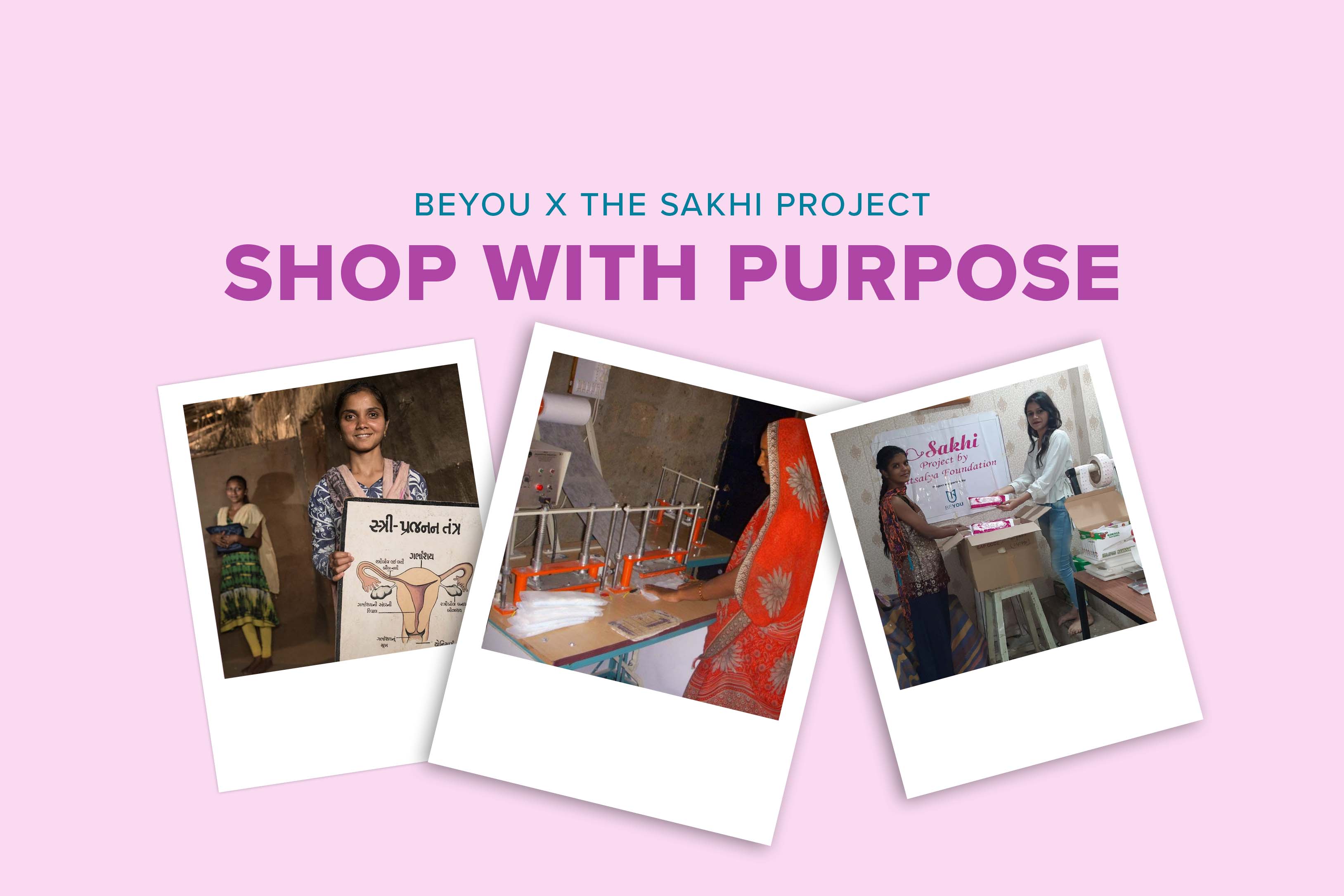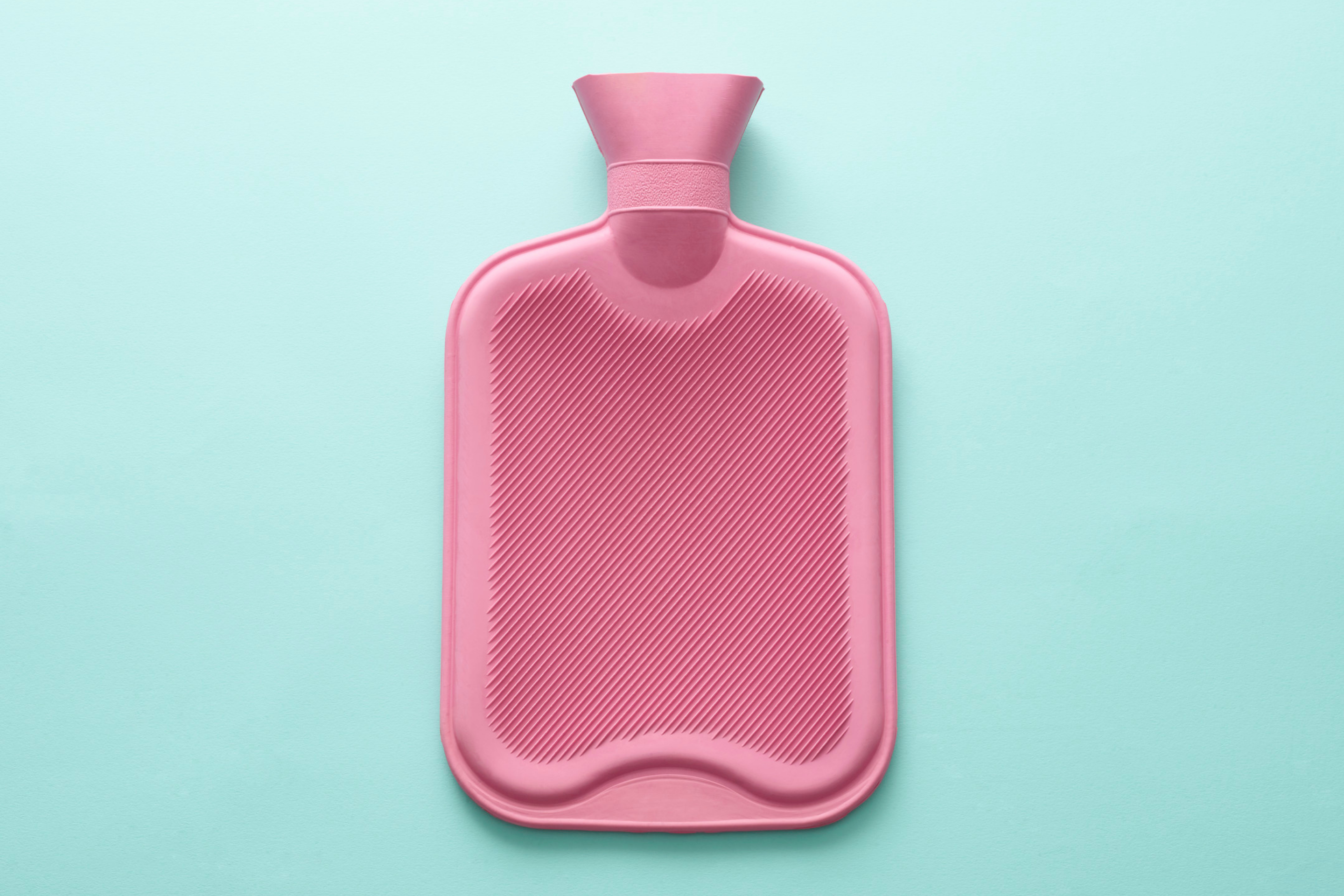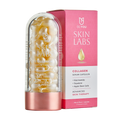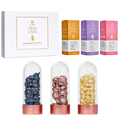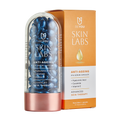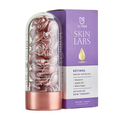Podcast Diaires: The Flow Down Episode 15
Apr. 02, 2020 By BeYou
Why we love it:
If you haven't guessed already, we're big fans of menstrual cups at BeYou HQ. They're sustainable, reliable and you don't have to deal with pesky tampon strings or sticky wings. We get so many questions about how to find your first cup, how to use it, insert it, clean it etc. This episode of the Flow Down answers all of your menstrual queries! Jess and Steph sit down with cup experts Kim and Amanda from Put a Cup in it who spill the beans on what it's really like to use a cup. Cup newbies and cup experts will love this episode for the frank and honest advice they offer and how they demonstrate why menstrual cups are so amazing!
We're sure you'll love this episode just as much as we do so make sure to give it a lesson below and subscribe to The Flow Down on your favourite podcast app.
Listen & Learn:
The Transcript:
(singing)
Welcome to The Flow Down, a podcast all about periods. I'm Stef, a women's health coach.
And I'm Jess a journalist. This is episode 15 and we're devoting it to one of our favourite period products, menstrual cups.
(singing)
I will never forget the first time I wore my menstrual cup.
Ooh, I can't wait to hear this one.
It was the summer of 2012 and I had finally decided I was going to try a cup. I had been working in a women's health clinic at the time and one of my colleagues swore by hers. And yeah, just really hesitant for a while. I mostly wore pads and I just wasn't really sure if it was going to hurt. And anyway, for a few different reasons I decided to go with it and I just remember sitting on my bathroom floor and playing with all the different folds and looking at the instructions, and finally I got it in and it was comfortable. And I got dressed and my friend picked me up and we went out. We went out to this Block Party in Midtown Manhattan and I remember feeling like such a bad ass that night.
Amazing.
Which is so different than how I would usually feel on my period. I remember specifically talking with this one guy and I'm just like, "If you only knew I have a menstrual cup in right now."
Oh, hell yeah. That's awesome.
What was your first menstrual cup experience like, Jess?
Okay, so I did not get mine in quite as easily. This was back in 2014. I was living abroad at the time in Bogota, Colombia and I found a DivaCup for sale at the little organic market in my neighbourhood. And I remember the price tag was pretty high. It was like the equivalent of I think 40 or $45, but I decided to go for it once I calculated how much money I was spending on other period products. And I remember trying to get it in and, Stef, it just would not go in or it would go in, but it wouldn't open up fully or it would feel uncomfortable.
And I was just like, "Is this not for me?" It took me, I think three whole cycles to feel like I actually got it right. And then when I finally got it, it was magical. I was like, "Oh, okay, that's it." So I'm just really glad that I persevered because now I absolutely love my menstrual cup and whenever someone tells me that they're going to give it a try, I always encourage them to just try until they get it.
Yeah. Yeah. I know everybody's experience can be totally different and I'm so glad you did because I know we've both come to love our cups. You were speaking about being abroad. Right after starting to use my cup, I moved to Argentina and that was actually kind of one of the reasons why I wanted to start using a cup, because previously when I travelled down there I realised that the period products just, I felt overwhelmed by them. They were different brands. The products themselves were different. And yeah, I wanted to feel comfortable and kind of confident on my period. And having my cup to turn to just made a huge difference.
Yeah. I love having something that's mine that I'm used to that I feel comfortable with. Every month, I know I get my period and I go right for my cup. I'm actually currently wearing my cup right now as I'm on day two of my period.
Love it.
But yeah, it just feels familiar at this point and it feels also especially great to not have to generate any trash on my period. That's a huge perk for me as well.
Yeah.
And then just the convenience. I mean, again, we've both used our cups while travelling in other countries. I've used my cup on road trips, while I'm working really long days. I mean it's so versatile and it's just, couldn't beat it when it comes to convenience.
I mean I really feel like there's nothing I can't do on my period as long as I've got my cup.
Yep.
Clearly you can tell we love our cups.
We are big fans and we know that we have some listeners who are fans as well and others who have never tried cups or think they're maybe gross or not for them or whatever it may be. We actually posted on Instagram a few weeks ago asking if anyone had questions about menstrual cups and many of you asked really interesting questions.
And ultimately we want you to feel like you have all of the information that you need to feel confident trying out and using a menstrual cup and getting the most out of it if you already use one.
To that end, we called upon two menstrual cup experts to help us put together the flow down guide for how to use a menstrual cup. Those experts are Kim and Amanda from Put A Cup In It.
Amanda and Kim were two green-living bloggers who met in 2012 and became self-described Vagangelists. They started Put A Cup In It in 2015 and have been talking about periods, vaginas and everything surrounding those topics since. They're fun, hilarious, and have all of the inside info when it comes to menstrual cups.
They've tried pretty much every cup out there so that you don't have to. They provide information and insight and really help you to be able to find the best cup for your body.
So here you are. Enjoy The Flow Down guide for how to use a menstrual cup featuring Put A Cup In It.
This is Amanda from Put A Cup In It and we are a menstrual cup resource and advocacy website.
Hi everybody. This is Kim and I'm also from Put A Cup In It and we are the best menstrual cup resource.
So a menstrual cup is basically a alternative reusable version of a tampon and instead of absorbing flow, it just catches your flow and they're typically made out of a medical grade silicone. However, there are some brands made out of TPE and there's also one brand made out of natural rubber. You can wear it internally inside the vagina. It sits below the cervix, it catches all of the flow and it can be worn up to 12 hours at a time. And the best part is that they do last upwards of 10 years.
There are so many benefits to using a cup. Sustainability is an obvious one. As Kim mentioned, they can last for up to 10 years if you take care of it properly. But I know for me one of the big things was the health concerns. When I first heard about cups, I thought it was gross or whatever, but then I started learning more about disposable products and I used to tampons and I learned about how drying they were and I learned about how they leave like little micro-abrasions inside your vagina and all these things. Then I started using a cup and I quickly realized that my vaginal environment was better. I didn't realise how drying those products were until I was using a cup. And so those things really stood out to me and I think they do for other people too, once they start using one.
Yeah. I initially switched to a menstrual cup because I felt really bad about using disposable products. I was feeling a lot of eco guilt. But once I did finally try one, it became more about comfort and convenience and of course, the fringe benefits of saving money and not having any waste were there. But I think the selling point truly is how comfortable they are over tampons and how convenient they are. When we tell people you can wear them up to 12 hours, it becomes like, "And that's safe?" And you're like, "Yeah, it actually is completely safe."
They're tested up to 12 hours. For people who love to travel or for people who go hiking or swimming or just are super active runners love them. You don't have to pack multiple tampons or pads with you. They aren't plastic-backed. You have a much more breathable experience, more comfortable, no rashes and just tampons, in general, we hear people just don't love them. I didn't love them, but I didn't know why. I just thought they were kind of what you use. So it was like, "This is what a period feels like," and then when people switch to a cup they're like, "Oh, that's what a period actually feels like," because you aren't dealing with dry, rigid, uncomfortable tampons.
I had noticed that pretty soon after using a cup, I didn't have to use lube when having sex or anything because my vaginal environment wasn't constantly being upheaved by being all dried out and irritated. So, that was a big thing. I noticed a cup, it doesn't leach anything. It doesn't absorb anything. It just sits there. We kind of joke that it's sort of like no trace camping. It doesn't alter the environment at all.
How to choose a menstrual cup.
When you start looking at cups, it can be overwhelming. There are dozens and dozens and dozens of brand and hundreds of cups. So we started listening to feedback and using our own experience and testing out cups and we created the quiz.
The Put A Cup In It Quiz is a really quick nine-question test for people who are considering using a cup and even people who have already tried a cup and want something that works better for them. And they answer these very basic nine questions about their age and their activity level, things about previous cup experience and if they don't have previous cup experience things about their flow based on the tampons they used or what they know about their own menstrual flow. And then also if they know their cervical height, which is something very important for cup users, and most people don't. When they start thinking about a cup, so we have kind of a solution for that on our backend.
And once they're done, they get a list of somewhere between three to five brands that should work for them based on their answers. And of course, the more they know their bodies or if they've had previous cup experience, the better the answers will be. But for those who don't quite know where their cervix is or don't know exactly how heavy their flow and they're guessing or not answering questions, we tend to point those people to a cup that fit most people well. And that's why there are a few cups that get recommended the most because they work for the most people.
It's funny, I don't think I ever thought about my cervix ever before using a menstrual cup. A lot of times we get people who try to feel for their cervix and they don't know what they're feeling. When you measure, you're going to use clean hands and you just kind of got to get up in there. There's no roundabout way if you're trying to measure your cervix. So you got to get comfortable with yourself and to become familiar with your anatomy a little bit. Generally speaking, if you find something up there, that's probably your cervix. There are some ridges just inside the vagina, but it's going to feel a bit like the tip of your nose and it's going to be less squishy than the walls, which sort of feel like the inside of your mouth.
And you really want to do that when you're on your period. And that's another thing most people don't know and I would never have known before trying a cup, is that your cervix does change stations. It moves up and down throughout your cycle. So if you happen to decide to measure your cervix and you do it when you're not on your period, you may have a completely different idea of how high or low it is and where it actually is on your period. And so that's one thing that kind of squeaks people out a little bit about it because they would have to measure while they're bleeding on their period.
But to mitigate that, again, we're going to point people to go in the shower, just do it while you're in the shower. Basically pick a spot, use another finger to mark on your finger where everything is inside comfortably because you want the cup to be completely inside including the stem. And then actually just take a ruler and measure your finger and then use our chart. Or we do give you guidelines when you're taking our quiz about what we consider measurement wise, how it translates to a low average or high cervix to give people that information. But a lot of people just end up buying a cup and it works because they got lucky or because they used our quiz and we planned to an average cup and it just worked for their average cervix.
And I've used a lot of cups and I could definitely say that there are some that I love more than others, but as long as they don't leak, that's a win for me, because I want something that's going to fit and not leak. That's my main goal.
If it's the right cup for you, you should not be able to feel it. And if you do feel it, it could be partly because you're new to cups and you're just looking for something, you're noticing there's something new and you're paying attention to your body more and able to detect it's there. But after a few cycles, we normally tell people between one and three cycles, you should get the hang of your cup and then really forget it's there if it's the right cup for you.
Yeah.
The cups are kind of expensive, typically somewhere between 20 to 40. In some cases 50 if you're buying a European import brand, like a car, like a Ferrari.
Some fancy vaginawear.
Yeah. And in a limited edition colour. This is the world that exists, believe it or not, for things that go in your vagina. The price is pretty high. So trying to help people with the quiz, find something that's going to work is where we really want to mitigate that financial strain on people for buying something over and over that doesn't work and they don't know why. It is likely that on the first try you'll get something that works well. And I do say that on the second cup you will very likely find your Goldilocks.
And now how to use a menstrual cup.
Everyone has a different method for their body when they're putting it in. So I like to put my foot on the rim of the toilet seat or on the bathtub rim or on the bench shower and put it in that way. [crosstalk 00:15:08]. Amanda's a squatter. And some people can really just sit on the toilet and put it in and that's another one that I can't imagine because that just doesn't work for me.
But everyone has to find their own way with their cups and there are so many infinite possibilities of the fold combination, the angle combination, your foot up, squatting, whatever combination. And that's what takes time for people. And again, making sure it's open, which you can't tell. I mean, you just don't know and you can run a finger around the rim to see if it feels like there are any indentations. But it's a dark, dark place down there and you just kind of have to go with it and use backup protection, of course, when you first start using a cup because you don't want to get too cocky.
Sometimes people get a cup and they're immediately right away like, "This isn't working." And they want to just immediately jump to buying another cup. And as she mentioned they can be kind of pricey. So you definitely want to give yourself some time, reach out for help. The brands, most of them are really responsive and will try to help you troubleshoot their cup. But there are also Facebook groups, we have our own where you can go and you can say, "This is what's happening." And someone will be like, "Oh, that happened to me too. This is what worked for me." Or it can be something as simple as removing the stem. That might be what makes it comfortable.
So giving yourself some kind of grace and time to figure out using a cup and using a cup with your body. Just giving yourself time is good before you jump into purchasing another cup. I would say the caveat there though is if the cup is obviously painful, you don't want that and if it just clearly doesn't fit. I think those would be clearer you probably need something else kind of situations. But everything else you kind of need to give yourself some time to see if you can figure out what's going on and if there's a remedy for it.
Personally, I have never used backup. Even when I started, I got apparently very lucky and the cup that I used worked for me, but I'm kind of along the lines of Kim where I think my vagina's pretty average in most regards.
So your vagina is more than average, Amanda. Don't sell yourself short.
Thank you. Thank you.
And very moist I hear.
In some ways, it is the moistest. No wait, hold on.
Anyways, so yeah. So I've never used backup and we've done polls in our group several times and it seems pretty 50/50 split on people who either just don't use any backup or who use it because they just want backup and then those who use it because they need something else. And then there's those who have really heavy periods and need it because even with a giant cup they're going to have leakage. But even those people always tell us that it's still better because they get more mileage out of the combination than they would their pad or tampon or pad-tampon combo.
One thing that is somewhat common and it's not really a leak, but people refer to it as a leak when they're troubleshooting in our group is what I like to call a wiping leak. And this is just a residual bit of stubborn menstrual blood that has travelled down the walls in between you taking out the cup and washing it and putting it back in and it's not a red leak. It will actually almost always just show up when you wipe, you'll see a little bit of blood and usually a darker colour because it's older blood.
And so that alarms people when they're new, especially they think, "Oh, my menstrual cup's not working. I have this leak." But almost always it never even hits their underwear or a liner or whatever they're wearing as a backup if they choose to. But it does alarm them because it looks like it's leaking and that's very normal. And it depends on how heavy your flow is. Usually, it's very minimal.
Yeah, and we have some users who that bothers them and so they'll just use their clean hand and do kind of a sweep of the vaginal wall before inserting their cup so that they don't have to worry about it.
Most people, when they initially hear about a menstrual cup, they immediately start going to the worst-case scenario, which for most people is making a mess when they remove a cup of blood from their vaginas. The most commonly asked question is, "How do you remove it without leaving a murder scene behind," which everyone, everyone goes there, they all imagine Carey when they're removing their menstrual cups. And when I do public events or speak about cups, I love to showcase how not to remove a cup, which is removing it like you're starting a lawnmower or a chainsaw by ripping the stem and just jerking it right out and letting it spray wherever it goes.
So, that's definitely how people imagine menstrual cup removals to be. But once you let people know that one, when you remove a minstrel cup, it's not very messy at all. People look at you with complete shock because they're thinking you're removing blood from your body and it is collected in a cup. And one of the reasons they think it's so messy is because they have this completely different idea of how heavy their periods are based on using disposable products. So when they're using tampons or pads, it's all collected and absorbed and the capillary action moves the blood and it soaks the pad. So you pull your pad and it's completely soaked or you remove a tampon, it's very heavy. But a lot of the moisture in the tampon that's contributing to the weight is actually your body's moisture and it's just all around the outside of it that's completely coated in blood.
And so you have these different ideas of how heavy periods are. And people switch to a cup and they remove their cup, and in a lot of cases, they're completely surprised and quite frankly disappointed because it's not nearly as much blood as they were expecting. They really do have a completely different idea and there are people who have extraordinarily heavy periods, but the average period is somewhere between 30 millilitres to 60 millilitres. And that's just one or two average menstrual cups you would fill them once over or twice over, and throughout the entire period.
30% of what a tampon absorbs is just your natural moisture. So, that's a lot.
Yeah, and menstrual fluid, for those who've never tried a cup or who've never given it a good look is very viscous and very mucusy. And so once again, as you remove a cup, instead of it being like a full goblet of wine that's sloshing at your slightest movement and level with the top, usually it's not quite level at the top for most people, although it definitely can be. And even if it is, it's not just spilling out as you move the cup. But again, you're over the toilet and we also suggest that people try it in the shower, especially on their first time to mitigate some of that paranoia and fear about the removal.
And then we also have to mention that they're worn, for most people, ten to 12 hours. So that idea of having to deal with emptying a cup full of your blood in a public bathroom, in a stall where people will watch you wash your cup when you're done. Even if you end up having to empty the contents in a public stall and you don't have a private sink, you really just dump it and put it back in and wash your hands after. There is no reason that you need to go to the sink and show everyone your bloody cup.
One of the things that I did and some people don't recommend this, some do, is that before my period started I did what some might call like a dry run. I use a little bit of lubricant on my cup just because at different times during your cycle you may be drier than others. But I just practice kind of getting it in and getting it out just because I wasn't on my period so I didn't have to deal with blood and worrying if I was going to make a mess or get stressed out. And I could easily stop and I don't have to worry about making sure it's in so I can go on with my day because that I was worried about catching menstrual blood and whatever. So for me, trying it when there was less pressure definitely helped because I was able to get more comfortable with it when it just wasn't as important at the time.
Yeah. I did not do a dry run so I ran into the fire head-on. And it does take some time to get used to it and that you may be frustrated. And I think that's one thing that we see a lot is people are frustrated because they are putting it in and it's opening too soon or it's not sealing and they're leaking. One of the things that I wish I could have told myself than when I was starting with my cup for the first time was when I folded the cup, and I think I was using the C-fold or the U-fold, depending on who you ask and it's just folding the cup in half-long ways and making it smaller to insert it because, of course, you have to fold it to insert it. It does not just go in open. And I was using the C-fold and putting it in and it would open too soon because I was holding the base and it would kind of flare out at the top.
And this is really common. It's why we actually recommend people try the punch down fold first where you punch down the rim towards the base and then squeeze it longways. It gives the cup a little bit of a handle and a narrower tip and it doesn't open as you're trying to put it in. So on a podcast, very hard to illustrate, but we do have a video of the punch-down fold and the C-fold. We actually have a video with nine folds on it for people who want to get really fancy and make roses first and then put it in their vagina. [Salon 00:24:47] even. No.
So I just wish someone had said, "Hey Kim, guess what? If it opens too soon, if it's high enough, you can actually just kind of push it on up there instead of removing it and trying again like you did six times and wearing out your vagina and making it real sore." So a lot of people recommend after you put the cup completely inside to give it a little twist or a spin. That way it helps it open and it's definitely something you can try. If it won't spin, don't force it.
A little more of a shimmy.
Yeah. It's just trying to get it to open. And it's one of the tools in your toolbox to make sure it's open, but it definitely does not work for everyone and I don't have to spin it and I don't spin it.
I was going to say one of the things that I love about cups, but that can be frustrating for new users especially is that the rules with cups is that there aren't really rules. You can trim your stem, you don't have to trim your stem. You can use whatever fold works for you. You can push it up if it opens too soon. I mean, you can do whatever. The whole thing is that it's whatever works for you. And sometimes we want a clear direction so that we can be like, "Okay, I follow steps one, two, three. I should get this result." But cups aren't quite like that, which can make it, like I said, a little frustrating at first, but you're going to get something that works for you in a way that works for you. You just kind of got to figure out what that is.
Lastly, how to care for your menstrual cup.
So for cleaning menstrual cups, it's somewhat, I'd say murky waters because the brands will all have different recommendations. And we tend to point people to the brand that they've purchased because people want some sort of authority figure to tell them what they're doing is right and that that's clean. But when it comes to menstrual cups, they're made from primarily medical grade silicone and all of the menstrual cups, whether TPE or silicone are non-porous materials. So this paranoia about cleanliness and bacteria and germs, as long as you wash it with nice warm water and a gentle soap, nothing with perfumes or dyes or microbeads or any added perfumes. Because again, we're working with really sensitive tissue here and you don't want to introduce that back to your vagina. But hot water and soap.
I'm a dirty girl and I don't sanitise my cup. I don't buy UV sterilisers. I don't boil my cup before or after my cycle. But if you want to boil your cup, that's fine. If it makes you feel using a cup is cleaner or safer, and if you do boil your cup, you can put it inside of a whisk to prevent it from scorching on the bottom of the pan. Alternatively, if you want a device specifically for your cup, which again is everyone's personal preference, I don't mind putting my cup in a pot that I would use to boil pasta or a whisk to whisk something. I don't cook, but whisking is a thing. And I don't mind it and my husband doesn't mind it, but there are people who either personally don't want their menstrual cup to be in their cookware or who don't want their husbands or partners or family members to find out they boiled their menstrual cup in the pots that the family uses to cook.
And that's a cultural thing or a personal preference, but they do make these collapsible silicone sterilisers that you fill with water and microwave. So that's also good for people who are living in dorms or communal living or apartments and spaces that would make more sense for them.
Something to keep in mind too is, I mean I can't speak for other people, but I put things in my vagina that I definitely do not boil. And I dare say others do too. So boiling my cup is not a concern of mine. Soap and water, I know it's clean. Dry it out. Don't leave it in some gross bathwater or something.
And you do need to store them in breathable containers because they're silicone and you don't want an airtight seal when you put them away, whether it be for 30 days or if you find yourself pregnant and you have to put your menstrual cup away for a year or two, just keep it in a breathable bag and it's completely fine.
And the other thing I wanted to throw in is people do have issues cleaning out the suction holes, which most cups have towards the top of the rim. And each brand is different. Some are very small. And some are large enough that you can run water over them and whatever, lovely gunk then will come out. But if there's stuff stuck in the suction holes, you just fill the cup with water and then tip it over and put it on top of your hand while it's full of water and squeeze the water out through those holes and that should clean it. Otherwise, you could use those little dental cleaners if you know there's some buildup. And I prefer colour cups because they're fine and my vagina loves colour. But a lot of the brands available are clear. And so people complain about stains and even in colour cups, if they're a lighter colour, they'll start staining after a few months of use. So you can put them in hydrogen peroxide and soak them.
Just do it. Just try it. It can be an investment depending on your financial situation, but more than any other thing we hear, we hear, "I wish I had tried it sooner." I could not get to count the number of times I've heard that from people and I mean I feel that way myself too. I wish I had known about it sooner because it really does offer a level of comfort and convenience that I just have not seen matched and it's just worth trying.
People call them life-changing for a reason, so allowing people to talk you out of it or letting yourself talk you out of it is a disservice to what could potentially be a very amazing period experience in the future. There definitely are learning curves, but they're worth getting over and even people who've struggled for several months and tried many cups, they'll say, "I'm glad I didn't give up because now I know what everyone's talking about." Some people get that on the first cup. Some people get it on the second or third. You're really looking for period nirvana, which is something I personally get every month with the cup that works for me. That's what people are looking for and what we wish for everyone who's listening, who is looking to try.
Kim and Amanda are the creators of Put A Cup In It, a menstrual cup resource and community, which you can find all across the internet.
Menstrual Cup 101. It's a wrap. We hope you enjoyed everything you've learned on the show today.
And we know that there's so much more that we could share about cups, which is why we'll be continuing the menstrual cup conversation on Instagram, where we are @flowdownpod. That will also include a fun giveaway. We'll be giving a few menstrual cups to some lucky winners.
We hope to see you there.
Our theme song is Crimson Wave performed by Tacocat, courtesy of Hardly Art Records.
And The Flow Down is edited and produced by Jessica Weiss.
Thanks for tuning in. We'll see you next time.
Bye.
Show notes:
We’re dedicating this episode to one of our favourite period products: menstrual cups! To be sure you have all the best cup info out there, we asked the experts to help us create a little audio guide. Kim and Amanda are self-proclaimed “Vagangelists” who run the popular resource and community Put A Cup In It. In this episode, they cover cup basics and benefits, plus best practices for how to use and care for a menstrual cup. Whether you’re thinking of trying a cup or have been using one for years, you’ll come away with new tools and insights.
Timestamps
[6:37] What is a menstrual cup?
[7:17] Why use a menstrual cup?
[9:48] How to choose a menstrual cup.
[14:50] How to use a menstrual cup.
[26:18] How to care for your menstrual cup.
[30:11] A few final words of inspiration if you’re ready to get started.
Resources + links
Kim and Amanda’s site PutACupInIt.com covers all things menstrual cup related. You’ll find menstrual cup reviews, FAQs, comparison charts and their super useful “The Cup Quiz.” Plus, that 9 Great Menstrual Cup Folds video Kim mentioned.
Join the PACII chat Facebook group.
Plus stay tuned to our Instagram feed @flowdownpod for more on menstrual cups + a giveaway in the coming weeks.
